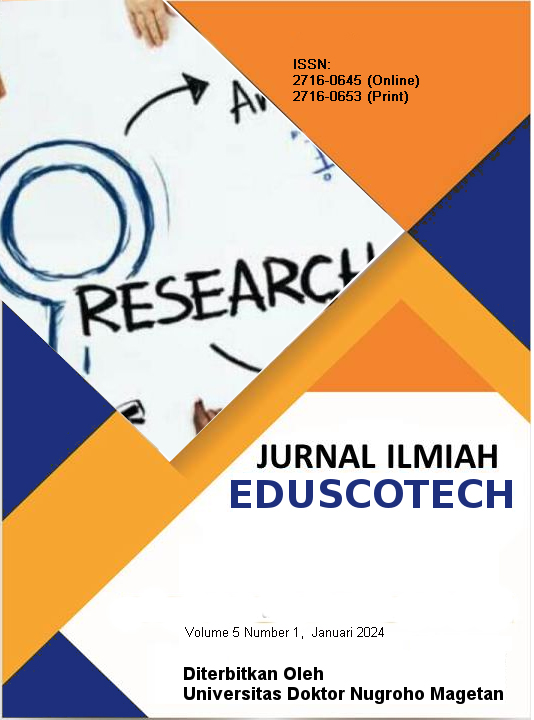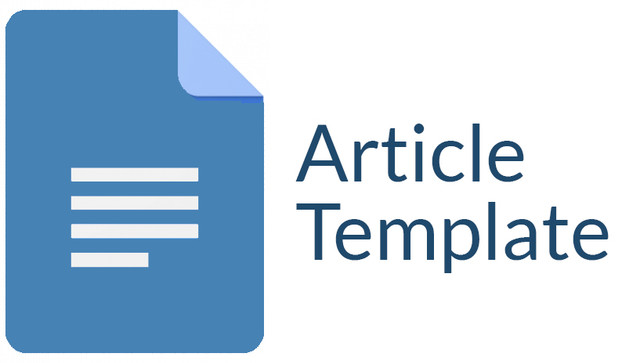Hubungan Antara Pemberian Tugas Dengan Motivasi Belajar Murid Kelas IV Di SDN Kincang 01
Keywords:
Assignment Giving, Learning Motivation, Thematic AnalysisAbstract
This study aims to analyze the relationship between assignment giving and learning motivation of fourth grade students at SDN Kincang 01. Data were collected using questionnaires, interviews with teachers, and observations during the learning process. Quantitative data analysis was carried out using the Pearson correlation test, while qualitative data were analyzed using thematic analysis techniques to identify relevant themes. The results of the study showed that there was a significant positive relationship between assignment giving and student learning motivation. Giving assignments that are in accordance with students' abilities can increase their intrinsic motivation, while external rewards play a role in increasing students' extrinsic motivation. Assignments that are varied, challenging, and relevant to the subject matter also increase student engagement in learning. This study provides an important contribution to the development of effective learning methods, especially in designing assignments that can increase student motivation. It is hoped that these findings can be used by teachers and schools to design better teaching strategies and support the development of student learning motivation in elementary schools.
Downloads
References
Ames, C. (2021). Classrooms: Goals, structures, and student motivation. Journal of Educational Psychology, 84(3), 261-271.
Anderson, L., & Williams, P. (2021). The role of extrinsic motivation in the academic achievement of elementary school students. Journal of Educational Psychology, 113(4), 512-525.
Ary, D., Jacobs, L. C., & Sorensen, C. K. (2021). Introduction to research in education (10th ed.). Cengage Learning.
Bergin, D. A. (2021). Children's motivation in school: A study of the role of goals and interests. Journal of Educational Psychology, 99(2), 134-142.
Braun, V., & Clarke, V. (2021). Using thematic analysis in psychology. In Qualitative research in psychology (pp. 77-101). SAGE Publications.
Brophy, J. (2021). Motivating students to learn (3rd ed.). Routledge.
Cohen, L., Manion, L., & Morrison, K. (2021). Research methods in education (9th ed.). Routledge.
Creswell, J. W. (2021). Research design: Qualitative, quantitative, and mixed methods
Creswell, J. W. (2021). Research design: Qualitative, quantitative, and mixed methods approaches (5th ed.). SAGE Publications.
Davies, H., & Clark, A. (2021). Examining the relationship between homework load and students' motivation in high school. International Journal of Educational Research, 89, 114-126.
Davies, H., & Clark, A. (2021). Examining the relationship between homework load and students' motivation in high school. International Journal of Educational Research, 89, 114-126.
Deci, E. L., & Ryan, R. M. (2021). Intrinsic motivation and self-determination in human behavior. Springer Science & Business Media.
Deci, E. L., & Ryan, R. M. (2021). Self-determination theory: Basic psychological needs in motivation, development, and wellness. Guilford Press.
Dweck, C. S. (2021). Mindset: The new psychology of success. Random House.
Field, A. (2021). Discovering statistics using IBM SPSS statistics (5th ed.). SAGE Publications.
Flick, U. (2021). An introduction to qualitative research (6th ed.). SAGE Publications.
Gagne, R. M. (2021). The conditions of learning (5th ed.). Holt, Rinehart, and Winston.
Hadi, S. F., & Setiawan, D. (2023). Pengaruh variasi pemberian tugas terhadap motivasi belajar siswa. Jurnal Pendidikan Dasar, 22(1), 58-68.
Hattie, J., & Timperley, H. (2021). The power of feedback. Review of Educational Research, 77(1), 81-112.
Hidi, S., & Boscolo, P. (2021). Motivation and writing. In Handbook of writing research (pp. 207-221). Guilford Press.
Hidi, S., & Renninger, K. A. (2021). The four-phase model of interest development. Educational Psychologist, 41(2), 111-127.
Johnson, M., & Smith, R. (2022). The influence of homework on students' motivation and learning outcomes. Educational Studies Review, 38(1), 45-58.
Keller, J. M. (2021). Motivational design for learning and performance: The ARCS model approach. Springer.
Lee, K., & Kim, Y. (2022). Exploring the relationship between student motivation and task completion in elementary education. Journal of Early Childhood Education, 40(2), 235-249.
Lepper, M. R., & Henderlong, J. (2022). Intrinsically motivated learning and its impact on cognitive development. Educational Psychologist, 37(4), 235-257.
Linnenbrink, E. A., & Pintrich, P. R. (2021). The role of self-efficacy in student engagement and learning. The Journal of Educational Psychology, 93(3), 536-548.
Mayer, R. E. (2021). Multimedia learning (2nd ed.). Cambridge University Press.
Purwaningsih, L., Hadianti, A., & Marsini, M. (2022). PROTOTYPE DESIGN FLIPBOOK MEDIA IN TEACHING GRAMMAR “SIMPLE PAST TENSE”. Indonesian EFL Journal, 8(2), 287-294.
Piaget, J. (2021). The child’s conception of the world. Routledge.
Prasetyo, A. T., Sutrisno, A., & Wulandari, S. (2022). Dampak pemberian tugas berlebihan terhadap motivasi belajar siswa. Jurnal Psikologi Pendidikan, 19(2), 134-143.
Ryan, R. M., & Deci, E. L. (2021). Motivation, emotion, and cognition: The dynamics of personality. Springer.
Skehan, P. (2021). A cognitive approach to language learning. Oxford University Press.
Susanti, D., & Wahyuni, S. (2023). Tugas kreatif sebagai faktor peningkat motivasi belajar siswa. Jurnal Pendidikan Kreatif, 10(3), 112-119.
Sweller, J. (2021). Cognitive load theory: Implications for learning and instruction. Springer.
Tan, J., & Sia, M. (2023). The impact of task design on students' motivation and learning engagement. Educational Technology & Society, 26(1), 67-80.
Vygotsky, L. S. (2021). Mind in society: The development of higher psychological processes. Harvard University Press.
Zimmerman, B. J. (2021). Motivational sources and outcomes of self-regulated learning and performance. Academic Press.
Downloads
Published
Issue
Section
License

This work is licensed under a Creative Commons Attribution-ShareAlike 4.0 International License.
Authors who publish with this journal agree to the following terms:
1. Copyright on any article is retained by the author(s).
2. The author grants the journal, right of first publication with the work simultaneously licensed under a Creative Commons Attribution License that allows others to share the work with an acknowledgment of the work’s authorship and initial publication in this journal.
3. Authors are able to enter into separate, additional contractual arrangements for the non-exclusive distribution of the journal’s published version of the work (e.g., post it to an institutional repository or publish it in a book), with an acknowledgment of its initial publication in this journal.
4. Authors are permitted and encouraged to post their work online (e.g., in institutional repositories or on their website) prior to and during the submission process, as it can lead to productive exchanges, as well as earlier and greater citation of published work.
5. The article and any associated published material is distributed under the Creative Commons Attribution-ShareAlike 4.0 International License









